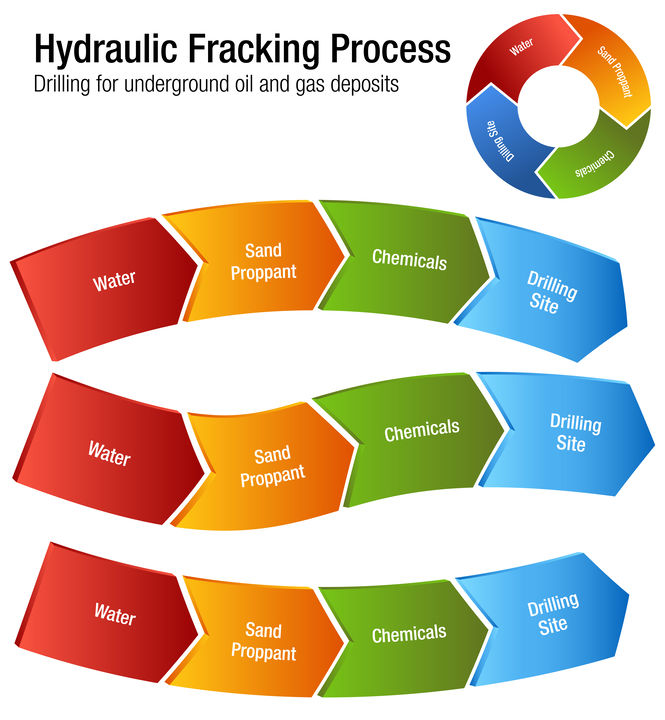Political pundits said it could not pass, but two recent polls suggest that the anti-fracking measure on Colorado’s upcoming ballot may win. As I recently wrote, Proposition 112 is an industry destroying “leave-it-in-the-ground” trick, artfully disguised as an innocent health measure. The news coverage has studiously perpetuated this naïve myth, so the trick may well work.
One of the polls is reported by the New York Times, which just says this about it: “One recent industry poll obtained by The New York Times showed 43 percent of voters in favor, with 41 percent opposed.”
There is not much to go on here, except that the vote is clearly too close to call, especially with 16% apparently undecided. We earlier heard experts saying that Proposition 112 might lose by 40 points, or 30% yes and 70% no. It sure does not look that way now, even given that polls are seldom accurate.
No information is given on who took the poll, how it was taken, etc. If it is indeed an oil & gas industry poll, it is unlikely to be biased in favor of anti-fracking.
But another poll has now been released that gives basically the same result, as well as some additional information. This one is from the American Politics Research Lab (APRL) in the Department of Political Science at the University of Colorado Boulder. The question on Proposition 112 is just a small part of the overall survey, which annually covers many aspects of the November elections.
Here is how Ballotpedia reports it: “An online poll from the University of Colorado’s American Politics Research Lab and conducted by YouGov from October 12 to October 17 asked registered voters how they would vote on Proposition 112 if they had to choose “yes” or “no.” Overall, it showed 52 percent in support, and 48 percent opposed. Among Democrats, there was 73 percent and 27 percent opposition. Among Republicans, there was 25 percent support and 75 percent opposition. Among independents, there was 51 percent support and 49 percent opposition.”
That this is an online poll, with just 800 responses, would normally make the results pretty shaky. But the similar result among the two polls adds considerable credence.
The actual question asked by APRL illustrates the deep fallacy that underlies support for Proposition 112:
“Question: Proposition 112 would require that new oil and gas wells be located at least 2,500 feet from occupied buildings and other areas designated as by the state of Colorado as vulnerable. Current state law requires that oil and gas wells be 500 feet from homes and 1,000 feet from schools. If the election were held today, would you vote yes or no on this proposition?”
The killer anti-drilling provision in Proposition 112 is that these extensive buffer zones are applied to all streams, including what are called “intermittent streams.” Since it rains everywhere, even in the desert, intermittent streams cover the entire State of Colorado. This provision is right in the text, so the Question’s reference to other areas as designated vulnerable by the State is simply false, and decisively so.
Here is the exact text of Proposition 112:
“(c) “Vulnerable areas” means playgrounds, permanent sports fields, amphitheaters, public parks, public open space, public and community drinking water sources, irrigation canals, reservoirs, lakes, rivers, perennial or intermittent streams, and creeks, and any additional vulnerable areas designated by the state or a local government.”
Note that while the government can add to this list of so-called vulnerable areas, intermittent streams are already in there.
This has nothing to do with protecting homes or hospitals. If a streambed that only carries water a few times a year is 10 miles long, then there will be a no-drill zone almost a mile wide for the entire 10 miles. This is not only not mentioned, it is carefully hidden.
To repeat, because it rains everywhere, intermittent streams cover the land. I doubt there is a square mile that does not have either a regular or intermittent stream within it.
This same disastrous omission occurs everywhere one looks in the press coverage of the fight over Proposition 112. The New York Times at least mentions vulnerable areas, but they still get it doubly wrong: “If passed, the measure — Proposition 112 — would require companies to place new wells at least 2,500 feet from homes, schools, waterways and other areas designated as “vulnerable,” two-and-a-half to five times the current state regulation.” (Emphasis added.)
Not only are intermittent streams not mentioned, there is currently no state regulation imposing nonsensical buffer zones along them. This means that Proposition 112 is not simply expanding existing buffers; it is wildly increasing the number of them, so as to blanket the entire state with no-drill zones where no one lives.
In all of the press coverage I have seen so far, this staggering point is never made. Proposition 112 is always described a expanding the buffer zones for homes, schools and hospitals, which is actually the least of what it does.
The confusion in Colorado is fundamental, because the basic problem with Proposition 112 has never been properly explained to the public.
